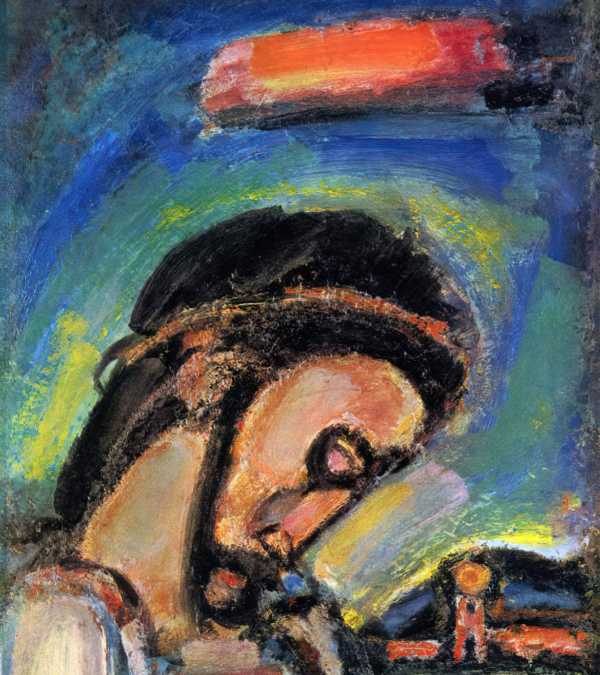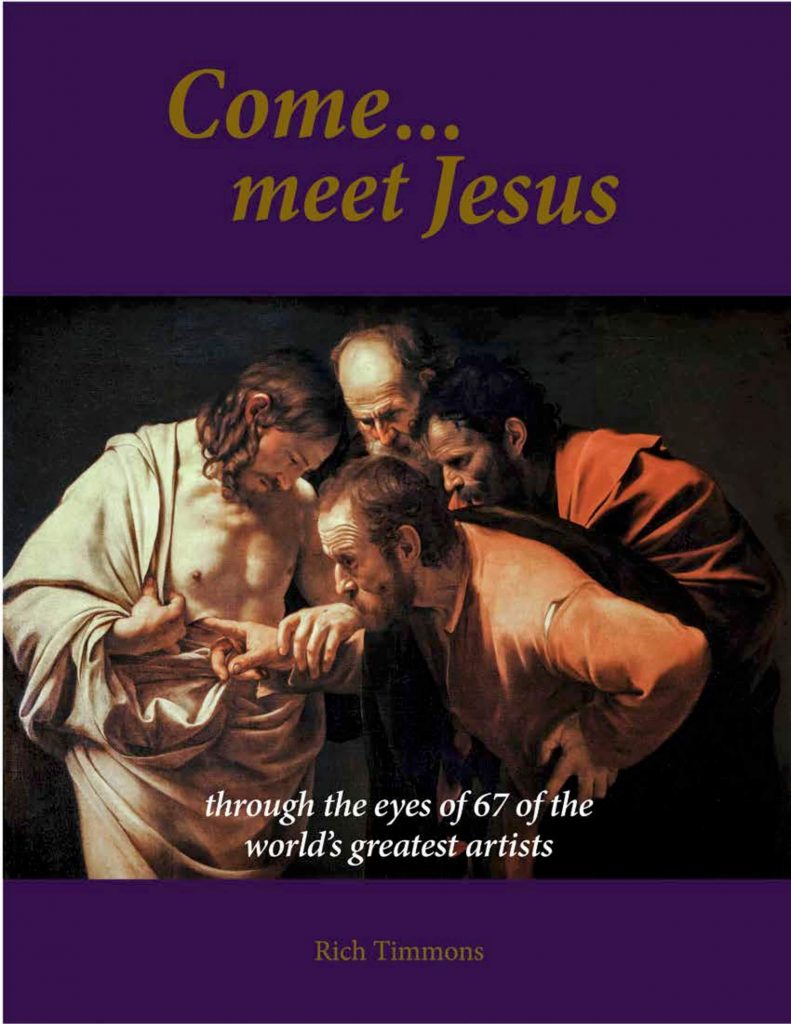“Jerusalem, Jerusalem, who kills the prophets, and stones those who are sent to her! How often I would have gathered your children together, even as a hen gathers her chicks under her wings, and you would not!” Matthew 23:37
Much of Western art from the Medieval, Renaissance, and Baroque periods of art history was made for churches or has Christian stories and themes. But during Modern art, starting with the impressionists in the late 1800s and lasting until the 1970s, art became increasingly skeptical of religion and artists viewed it as restrictive and old-fashioned compared to the new philosophies and aesthetics of the times. There were still artists working in classical styles with classical and even Christian themes, but all serious artists left the old aesthetics, philosophies, and beliefs behind. Georges Roualt was one huge exception.
Roualt’s style is definitely Modern, aligning with the Fauves, the most famous of which is Henri Matisse, and German Expressionists. The space is flat, the brushstrokes are coarse and childlike, and the colors are exaggerated and distorted. The painting is not trying to create a realistic illusion in which the viewer can enter the space. It is presenting raw emotional ideas communicated through the abstract use of line, shape, color, and texture. And the prevailing emotion here is sorrow. Christ’s head is bowed and His eyes are closed. His heart is heavy with sadness and compassion for the wretched sinners He has come to save, for the city of perhaps Jerusalem in the background. The colorful space around His head brings emotional nuance. The dark at the top feels heavy like a gathering storm. The pure blue feels deep, ancient, and spiritual. The yellows act like a halo and speak of His divinity, wrapping directly around Christ and arcing over Jerusalem, God’s people, tying them together. Jesus came because of them, out of them, and for them… and would be killed by them. The red swathe floating above His head echoes the horizontal red form of the city and seems to reference the coming death and violence as well as the wrath and judgment coming from the Father onto Christ Himself, instead of those who deserve it. Roualt was unique in that while he was part of the Modern art culture, he truly believed in Christ, and his artwork directly references that. He was deeply moved by the sorrow of the people around him and often painted the poor and rejected of society, and saw in them a reflection of Christ as the ultimate Man of sorrow, identifying with humanity in its suffering and redeeming it through His pain. The depth in his work and the tension of despair and hope must have been such a witness to his painter friends like Matisse, who thought that the aesthetic pursuits of their art could somehow enlighten their souls and reform humanity. But Roaualt knew that only Christ can save us from our miserable state of sin.
Like, follow & share https://www.facebook.com/comemeetjesus.art
Shop coffee table books here.


